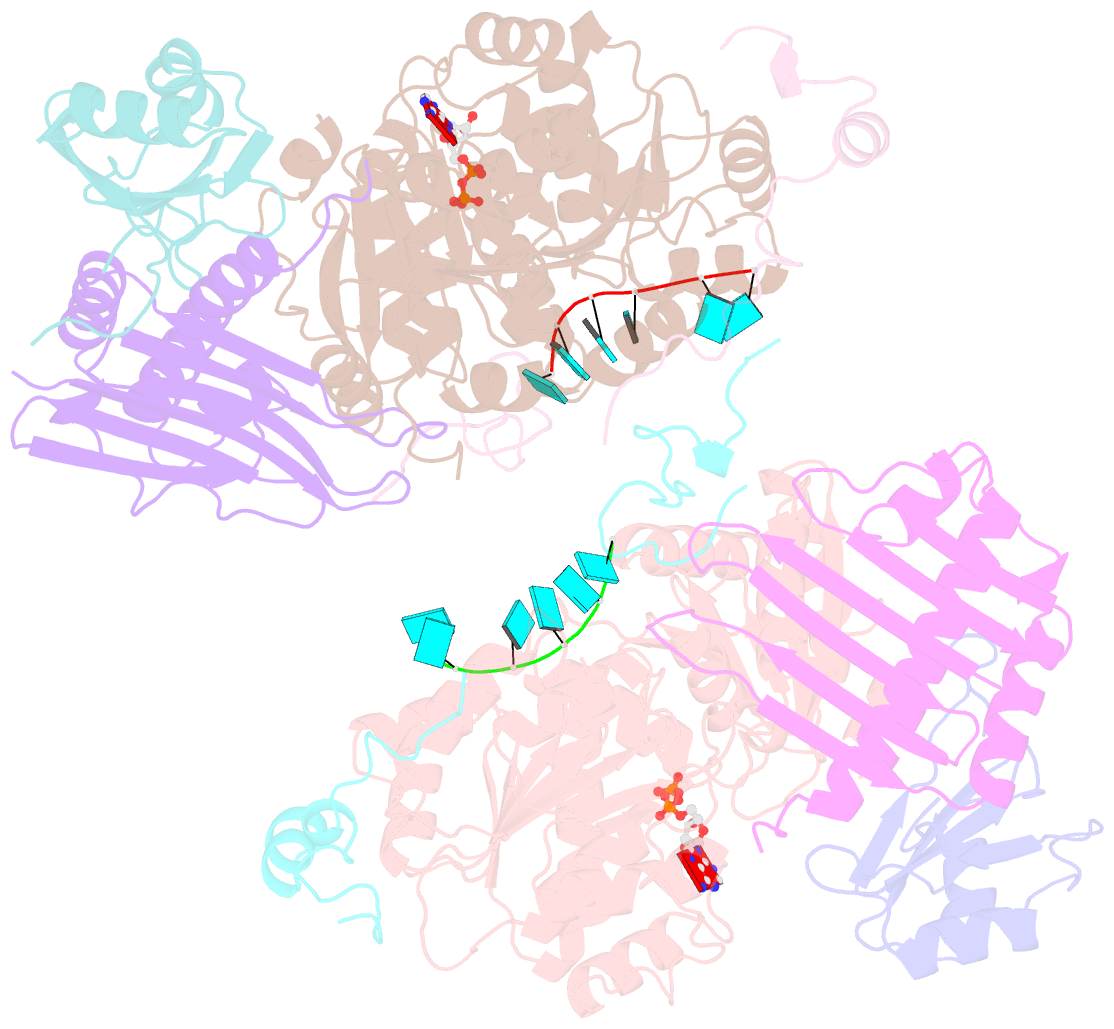Summary information and primary citation
- PDB-id
- 3ex7; SNAP-derived features in text and JSON formats;
DNAproDB
- Class
- hydrolase-RNA binding protein-RNA
- Method
- X-ray (2.301 Å)
- Summary
- The crystal structure of ejc in its transition state
- Reference
- Nielsen KH, Chamieh H, Andersen CB, Fredslund F, Hamborg K, Le Hir H, Andersen GR (2009): "Mechanism of ATP turnover inhibition in the EJC." Rna, 15, 67-75. doi: 10.1261/rna.1283109.
- Abstract
- The exon junction complex (EJC) is deposited onto spliced mRNAs and is involved in many aspects of mRNA function. We have recently reconstituted and solved the crystal structure of the EJC core made of MAGOH, Y14, the most conserved portion of MLN51, and the DEAD-box ATPase eIF4AIII bound to RNA in the presence of an ATP analog. The heterodimer MAGOH/Y14 inhibits ATP turnover by eIF4AIII, thereby trapping the EJC core onto RNA, but the exact mechanism behind this remains unclear. Here, we present the crystal structure of the EJC core bound to ADP-AIF(3), the first structure of a DEAD-box helicase in the transition-mimicking state during ATP hydrolysis. It reveals a dissociative transition state geometry and suggests that the locking of the EJC onto the RNA by MAGOH/Y14 is not caused by preventing ATP hydrolysis. We further show that ATP can be hydrolyzed inside the EJC, demonstrating that MAGOH/Y14 acts by locking the conformation of the EJC, so that the release of inorganic phosphate, ADP, and RNA is prevented. Unifying features of ATP hydrolysis are revealed by comparison of our structure with the EJC-ADPNP structure and other helicases. The reconstitution of a transition state mimicking complex is not limited to the EJC and eIF4AIII as we were also able to reconstitute the complex Dbp5-RNA-ADP-AlF(3), suggesting that the use of ADP-AlF(3) may be a valuable tool for examining DEAD-box ATPases in general.





